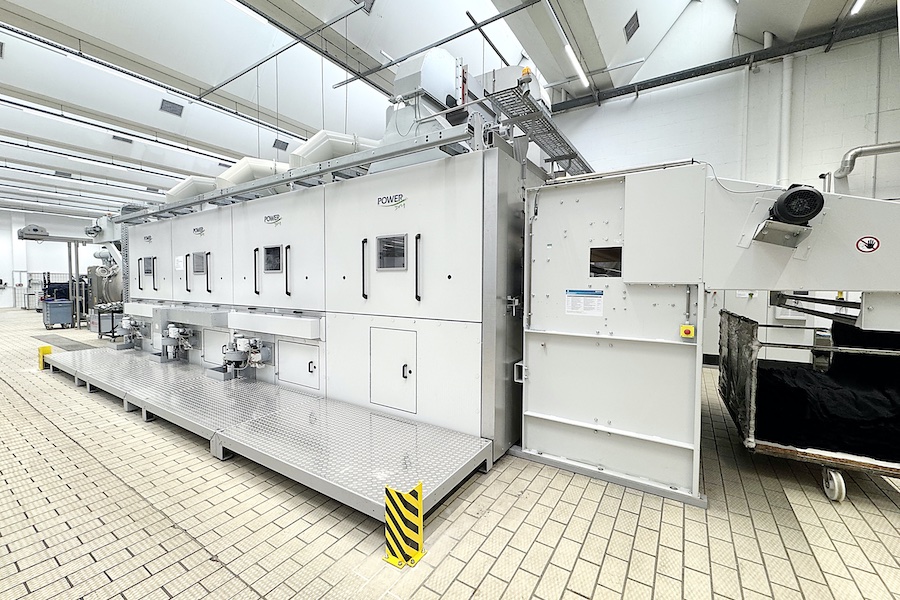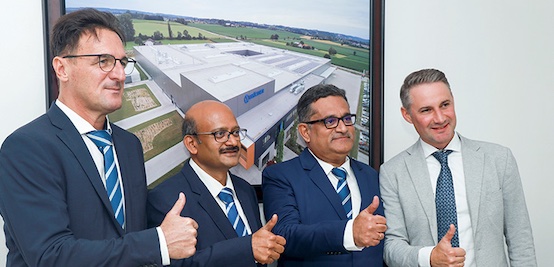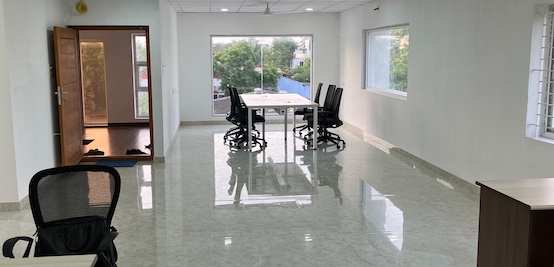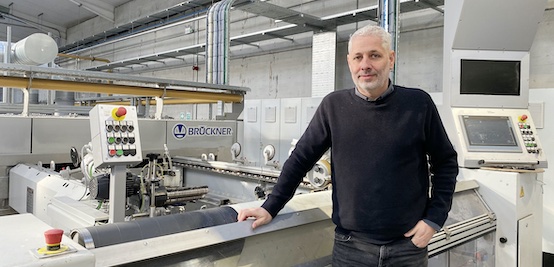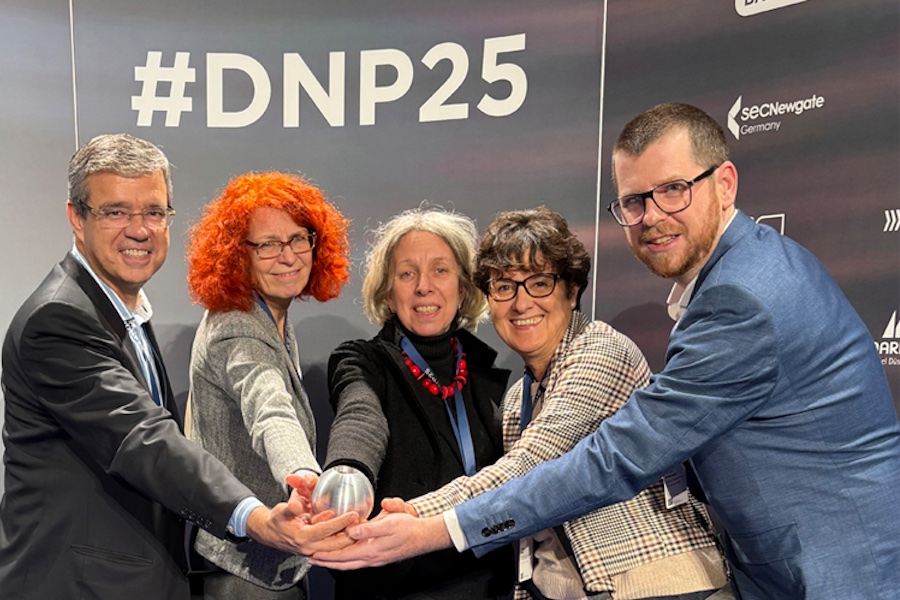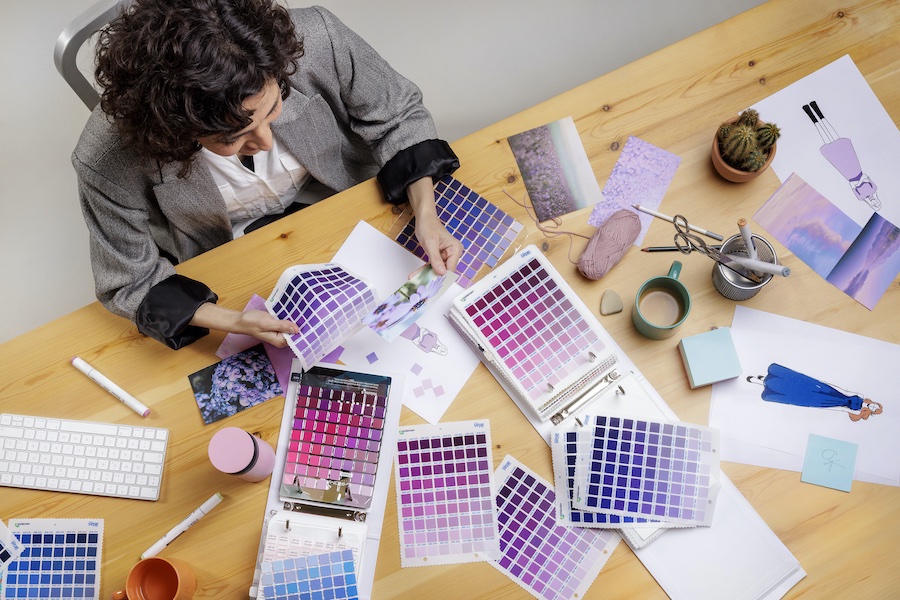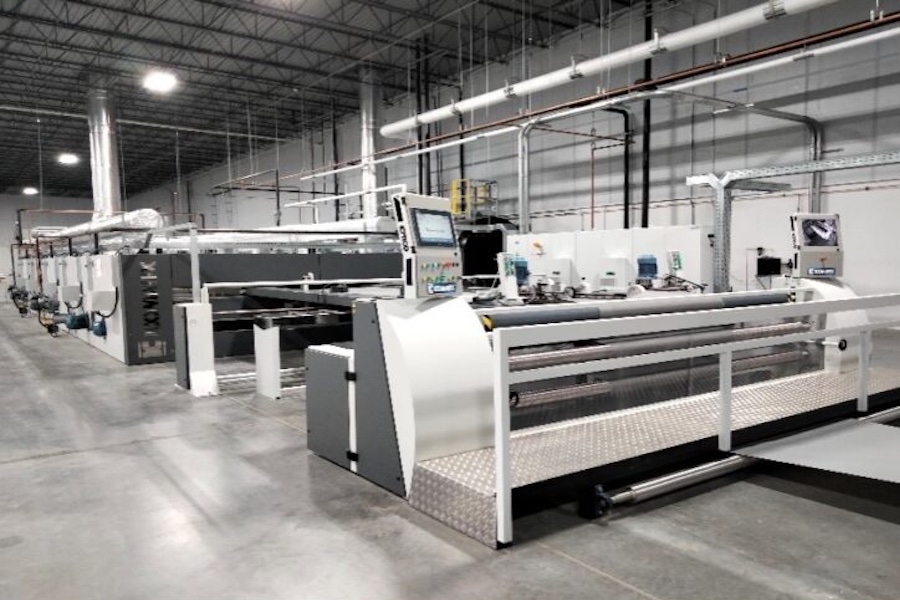#Dyeing, Drying, Finishing
Well prepared for the textile market of the future with sustainable production
The Feinjersey Group is an internationally operating textile company and supplies the "global players" of the textile industry worldwide. The value chain of the company, which is based in Götzis, Austria, ranges from yarn processing to the finished product. As a fully integrated production company, Feinjersey attaches great importance to high quality standards and guarantees the utmost care in every step of the process chain. With approx. 250 employees and annual sales of around 45 million euros, the company knits, dyes and finishes top-quality knitted fabrics as well as elastic woven fabrics for a wide range of applications. End products include functional underwear for fashion and sports, professional workwear, light and luxurious day and nightwear, shapewear, children's clothing and much more. Feinjersey is also active in the technical textiles sector. Among other things, fabrics for the automotive industry, laminating backings and coating substrate for artificial leather or foils, construction textiles or fabrics for medical technology are all produced.
Modern machinery used at Feinjersey ensures efficient use of resources. Water and energy consumption as well as pollutant emissions must be reduced to a minimum - this is firmly anchored in the company's philosophy. For this reason, the Austrian textile manufacturer has been certified with the Bluesign textile seal. Bluesign is a sustainability standard that covers the entire production chain of textile products and sets strict criteria with regard to the resources used. In textile finishing in particular, the focus is on minimising energy consumption as this process is the most energy-intensive in the entire process chain. For this purpose, Feinjersey uses its own photovoltaic system as well as heat-recovery and exhaust air purification systems on all their stenters. By using the excess heat from production, the company's buildings are heated. All six stenters at Feinjersey are made by BRÜCKNER and are equipped with three-stage heat-recovery and exhaust air purification systems, some running for more than 20 years. This shows very clearly the innovative strength of the company. For many years, Feinjersey has taken environmental aspects into account when equipping the production, which is paying off for them today.
The latest BRÜCKNER line has a working width of 4.20 m and is mainly used for the finishing of highly elastic and extremely sensitive knitted fabric. In order to avoid yellowing on the fabric, the stenter is equipped with an indirect gas heating system. The knitting oil vapours coming from the fabric during the heat-setting process are extracted from the dryer and cleaned in a BRÜCK-NER ECO-AIR exhaust air cleaning system before being extracted to atmosphere. The complete exhaust air treatment on the newest stenter is carried out by a multistage BRÜCKNER ECO-HEAT and ECO-AIR system.

The first stage is an ECO-HEAT heat-recovery system air/air. Here, by means of 12 plate heat exchangers, the exhaust air heat is transferred to fresh incoming air which is pre-heated and then fed into the stenter for the drying process. This increases the drying capacity and reduces energy consumption. Exhaust air pollutants generated during the heat-setting process cause thin, hard deposits to form on the heat exchangers over time. The integrated, automatic steam cleaning system keeps the heat exchangers in good working order. Every few weeks, the handy heat exchanger modules are simply removed for basic cleaning and replaced with clean replacement modules. The dirty heat exchanger modules are efficiently cleaned in an ultrasonic cleaning bath, as the units automatically programmed steam cleaning process cannot keep the heat exchangers 100% clean during heat-setting processes. After ultrasonic cleaning the modules can be used again with full heat output being achieved and the complete heat output being used sustainably.
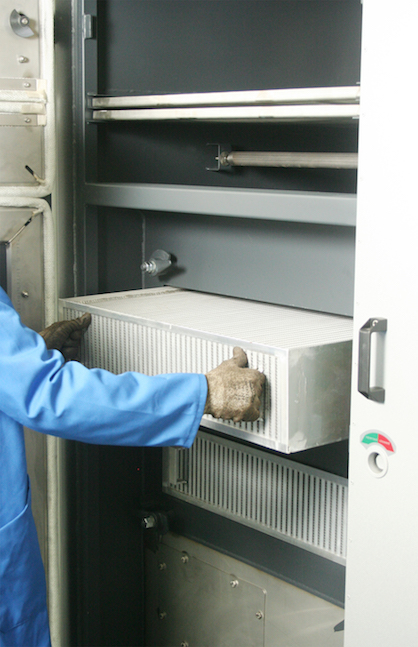
The second stage is an ECO-AIR exhaust air scrubber fulfills two important tasks at the same time: it cools the exhaust air and binds oily pollutants in water. Thanks to a sophisticated design of the exhaust air scrubber, only about 1 cbm of wastewater is produced per week. The oil-containing substances extracted from the exhaust air are separated from the water by an oil skimmer and disposed of separately. An ECO-AIR electrostatic precipitator is installed as a third stage, which separates the finest aerosols from the exhaust air after the air scrubber. Thus also the visible smoke above the outdoor stack disappears and the exhaust air smell is reduced to a minimum.
Due to this proven BRÜCKNER exhaust air treatment system, the company Feinjersey can safely comply with the prescribed emission limits. The investment expenditure as well as the operating costs are clearly lower compared to other processes such as e.g. thermal afterburning systems.



